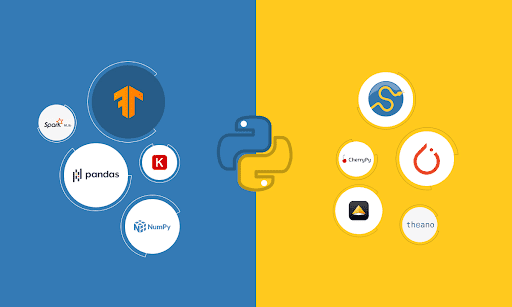
Machine Learning has quickly become the go-to solution for tasks that are difficult to accomplish with traditional programming. From self-driving cars to AI assistants, Python is powering some of the biggest names in tech like Google, Facebook, and even NASA.
Its versatility makes it a great candidate for Machine Learning, especially when Python was in the top five most wanted languages in the Stack Overflow survey.
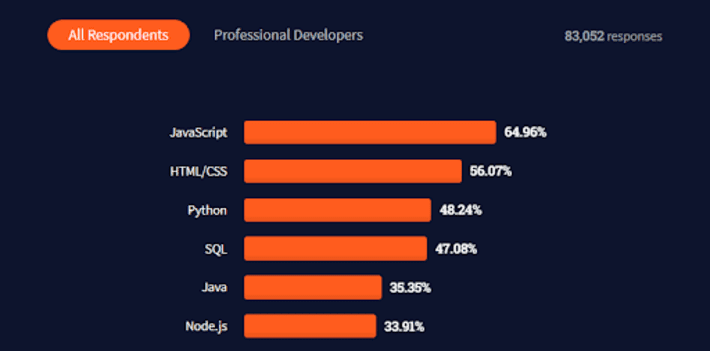
There is no denying the fact that the Python community is thriving, and the demand for Machine Learning engineers with Python knowledge has become a significant priority for companies.
That’s why we’ve compiled this list of top Python libraries and frameworks that will help you succeed whether you’re just starting or building toward the future.
List of 10 Top Python Frameworks and Libraries for Machine Learning
#1. TensorFlow (Google)
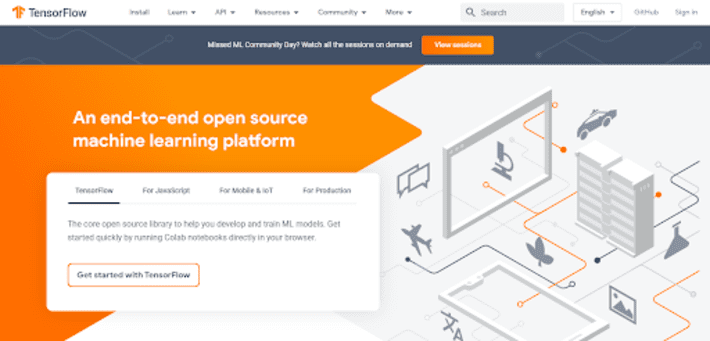
While no longer the only major player in town, Google’s TensorFlow continues to dominate as a go-to resource for building machine learning models.
One of the top Python libraries currently has over 15 million downloads from the Python Package Index. Its flexibility makes it easy to build everything from chatbots to self-driving cars. Companies like Airbnb and Uber also use TensorFlow to power their AI products.
It’s not the only powerful library out there, but its popularity is a testament to its usefulness in machine learning projects.

#2. Scikit-learn
Scikit-learn provides users with feature engineering for data sets, prediction algorithms, preprocessing tools, model selection, and many others.
The library’s creators have worked hard to make it the “go-to” resource for beginners and experts alike. Scikit-learn has a simple, clean API that makes everything from regression analysis to hypothesis testing a breeze.
Moreover, the library’s flexibility has proved to be a significant boon for those working in different fields. For example, it’s been helpful in the development of recommender systems and fraud detection tools.
As of Oct 2021, there are more than 24,296,500 downloads of Scikit-learn. (Source: PyPI Stats)
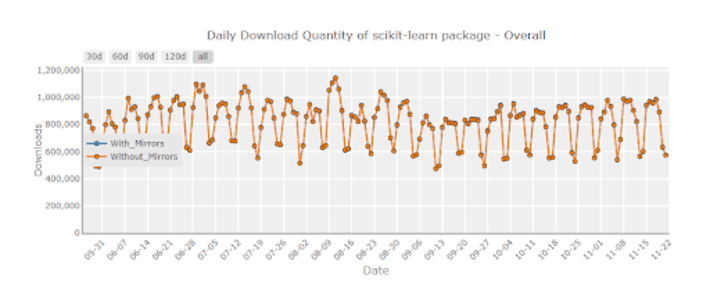 #3. NumPy
#3. NumPy
NumPy is the ultimate package required for scientific computing in Python. It provides users with high-level commands that are used to create efficient, multidimensional arrays.
The library’s creators have focused on making it fast, easy to use, and compatible with other libraries within the SciPy stack. For example, NumPy was built to work with SciPy’s signal processing, random number generation, and statistics functions.
As per Google Trends, there has been a continuous search for respondents ManyNumPy in the past five years.
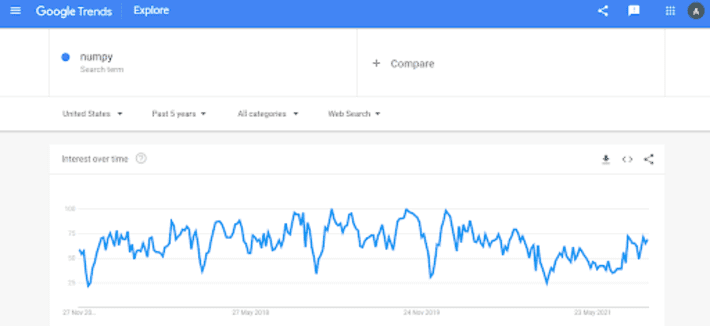
#4. SciPy
A collection of algorithms and high-level commands to perform advanced math functions, SciPy is relatively easy for beginners to learn. The library also provides extensive documentation that makes it helpful for experts working with large datasets.
It’s one of the most versatile libraries in the Python space because it can solve almost any scientific computing task.
It allows users to manipulate images, find derivatives, perform integration, and much more. That said, SciPy isn’t just for mathematicians. It also provides tools for quantum physics, machine learning, signal processing, and even spectral analysis.
#5. Theano
Theano is a Python library that’s capable of running machine learning algorithms. It was designed to compile Python code into machine language for faster and more efficient computation.
In GitHub, Theano has 9.5k Stars and 2.5k Forks. Theano takes advantage of CPUs and GPUs to provide users with faster processing speeds. It’s capable of optimizing any Python function, making it easier to work with data in large quantities.
Theano takes advantage of CPUs and GPUs to provide users with faster processing speeds. It’s capable of optimizing any Python function, making it easier to work with data in large quantities.
It also lets you manage multi-dimensional arrays without worrying about performance issues. That said, Theano is more than just a fast alternative for intensive computing tasks; it’s also a useful machine learning library for developers.
Besides, it is also a good idea to hire Python developers in India from a company that provides the best Python development services.
#6. Keras While many Python frameworks for machine learning focus on the low-level details of deep learning, Keras is different because it’s high level. This means that you can perform deep learning without worrying about the underlying mechanics.
While many Python frameworks for machine learning focus on the low-level details of deep learning, Keras is different because it’s high level. This means that you can perform deep learning without worrying about the underlying mechanics.
Keras provides an easy-to-use API that allows you to build and train neural networks without the complicated syntax of other libraries. Since it’s based on TensorFlow, Keras can also run all models developed using Google’s library.
It’s used by data scientists and deep learning practitioners to create complex models that can run on CPUs or GPUs. Moreover, it offers a simple API to define custom layers and runs efficiently on the CPU (not just GPU). It uses Theano and TensorFlow as its backend so that you can develop your models from scratch.
#7. PyTorch
Facebook’s Pytorch was released as an alternative to Google’s TensorFlow in late 2016. It quickly became one of the top Python frameworks for machine learning with a strong community of contributors.
PyTorch is capable of dynamic computation graphs, allowing for fast prototyping. It also supports CUDA to take advantage of GPUs for faster training.
It has since become an industry standard among players like Salesforce, OpenAI, and Intel (who used it to build their latest search engine ).
#8. Pandas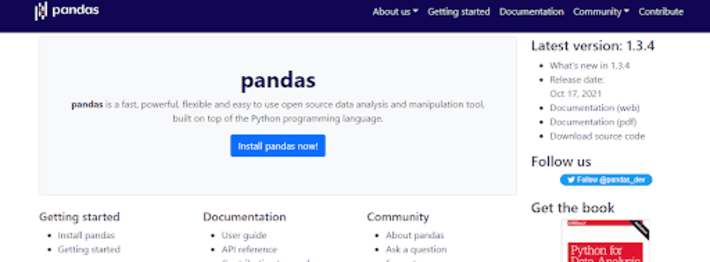 Pandas is a Python library that’s often used for data engineering and data analysis. It provides users with unique feature sets, including high-performance data structures and time series capabilities.
Pandas is a Python library that’s often used for data engineering and data analysis. It provides users with unique feature sets, including high-performance data structures and time series capabilities.
However, it is fast, flexible, easy to use, and a powerful open-source alternative to expensive commercial data analysis software. Pandas is particularly useful for in-depth analysis of finance, statistics, social science, and engineering data.
Moreover, Pandas can create highly complex indexes, which are helpful when trying to find data points within large datasets. Plus, if you look at the Stack Overflow 2021 survey, over 28% of respondents prefer using Pandas in their projects.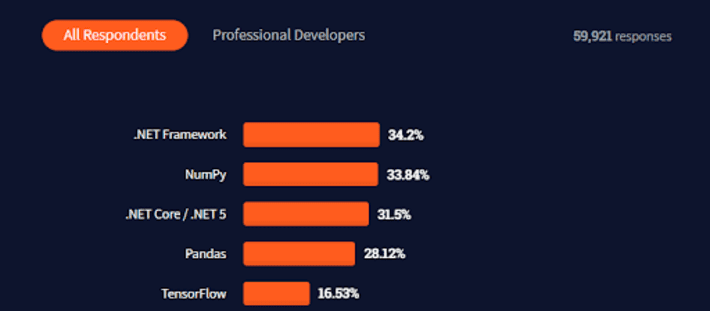
#9. Spark ML
Spark is incredibly fast & one of the well-recognized Python libraries for machine learning used for big data processing. It allows users to build distributed pipelines that can run across clusters of machines without any code changes.
Since it’s optimized for distributed computing, Spark can process data much faster than other machine learning libraries.
Additionally, it’s capable of automating the most time-consuming parts of building analytical pipelines. This simplifies identifying patterns in data and discovering insights that can be used to make predictions.
#10. NLTK
Natural Language Toolkit (NLTK) is a Python library that focuses on machine learning and NLP (natural language processing). NLTK is designed to handle tasks like tokenizing text, identifying parts of speech, and generating parsing trees, among other things.
NLTK also provides helpful methods for normalizing tokens and handling orthography (spelling) differences between languages.
This library makes it easier to build applications that use text as input and output, such as chatbots and text-to-speech generators. Besides, it has 10.3k Stars and 2.5k Fork. Conclusion
Conclusion
Machine learning is a complex topic that requires a lot of time and effort to master. Fortunately, the Python machine learning library & framework ecosystem is overgrowing to meet tech needs.
The most popular frameworks are listed above, but there are many others you can explore. You’ll also find libraries for specific tasks like text processing, image recognition, time series analysis, and more.
Although, if you’re just getting started, top-notch machine learning companies in India like PixelCrayons, ValueCoders, etc. are the perfect place to begin your journey.
Besides, they have a team of highly experienced professionals who can help you build a machine learning model for your business or startup. These experts use a wide range of data science tools, from R to Python and beyond.
FAQs
Q1: Why is Python suitable for machine learning?
A1: 5 reasons why Python is the best programming language for machine learning.
- Python’s machine learning libraries have lots of valuable features.
- Python is well-known for being simple to read and write in terms of user-friendliness. As a result, it is simpler for newcomers to get started with data science.
- Many free tutorials and guides are available online to help you take your first steps in machine learning.
- The Python community is also beneficial to new users. This means that you’ll find lots of support when you get stuck or need advice on how to use a particular library or tool.
- Since it’s open-source, Python has the largest ecosystem of machine learning libraries. The most popular frameworks are all free and open-source.
Q2: What are the potential pitfalls of using Python for machine learning?
A2: Some drawbacks of using Python for data science.
- While it’s good to point out limitations, we can’t emphasize enough how much easier life is now that you have access to all these fantastic tools.
- With regards to language-specific issues, most challenges center around performance. For this reason, using Python for machine learning can be advantageous because it doesn’t require as much power as other programming languages.
- Nonetheless, it’s essential to do a thorough code review before deploying your machine learning model or application. Also, make sure to document the reasons behind your decisions so that others can quickly help with maintenance issues in the future.
